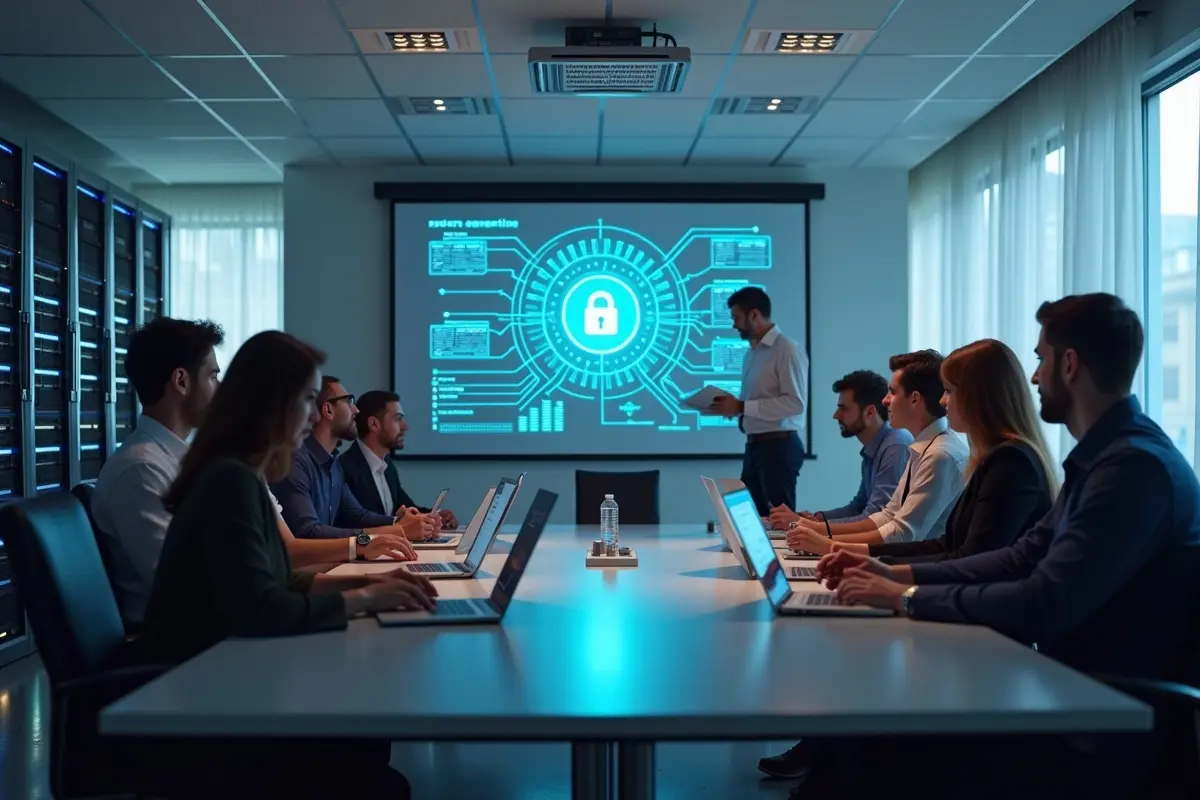
Stay Ahead of Cyber Risks: 6 Steps to Protect Your Business Data
In an increasingly digital world, cyber threats have become a major concern for businesses of all sizes. Data breaches, ransomware attacks, and unauthorized access to sensitive information can result in financial loss, reputational damage, and legal consequences. To mitigate these risks, businesses must implement proactive cybersecurity measures.
Taking a strategic approach to data protection not only safeguards your organization but also ensures long-term operational stability. Here are six essential steps to help protect your business data from cyber threats.
Contents
Implement Robust Access Controls
One of the most effective ways to secure business data is by implementing strong access control measures. Unauthorized access to sensitive files and systems can lead to data leaks and cyberattacks. To prevent this, businesses should use multi-factor authentication (MFA), role-based access control (RBAC), and strong password policies.
MFA requires users to verify their identity using two or more authentication methods, such as a password combined with biometric verification or a one-time code. RBAC ensures that employees only have access to the data they need to perform their tasks, reducing the risk of internal security breaches.
Regularly updating and reviewing access permissions is also crucial. As employees change roles or leave the company, ensuring their access is modified or revoked prevents potential security vulnerabilities.
Encrypt Data for Maximum Security
Encryption plays a vital role in protecting sensitive business data from unauthorized access. Encrypting data ensures that even if cybercriminals gain access to your files, they won’t be able to read or misuse the information.
Businesses should encrypt both stored data (data at rest) and data in transit (data being transmitted between devices or networks). Secure communication channels, such as VPNs (Virtual Private Networks) and end-to-end encryption protocols, help protect information shared over the internet.
Also, businesses should consider full-disk encryption for company devices, ensuring that lost or stolen laptops and mobile phones do not become security risks.
It’s also wise to make sure that any third parties you work with or use for your business have good security measures in place, and that includes your bank account. Evolve Bank fintech is a great example of a bank that understands cybercrime and has put measures in place to prevent it from happening.
Keep Software and Systems Updated
Outdated software and systems are among the most common vulnerabilities cybercriminals exploit. Cyberattacks often target outdated applications with known security flaws, making regular updates and patch management essential.
Businesses should set up automatic software updates or establish a structured patch management process. This applies to operating systems, security software, third-party applications, and any digital tools used within the company.
Using reputable cybersecurity tools, including firewalls and intrusion detection systems, helps monitor network activity and detect potential threats. A well-maintained and up-to-date cybersecurity infrastructure significantly reduces the risk of breaches.
Train Employees on Cybersecurity Best Practices
Human error remains a leading cause of cybersecurity incidents. Phishing attacks, weak passwords, and accidental data leaks often result in employees not being adequately trained in cybersecurity best practices. Investing in regular cybersecurity training ensures that employees are aware of potential threats and know how to respond appropriately.
Training should cover topics such as identifying phishing emails, creating strong passwords, recognizing suspicious activity, and following company security policies. Employees should also understand the importance of reporting security incidents promptly.
Creating a culture of cybersecurity awareness helps minimize internal risks and ensures that all staff members contribute to maintaining a secure environment.
Utilize Secure File-Sharing and Collaboration Tools
With remote work and digital collaboration becoming more common, businesses need secure ways to share and store files. Using unsecured methods of communication, such as email attachments or public file-sharing platforms, increases the risk of data breaches.
Adopting secure file-sharing solutions from Kiteworks.com, and other similar providers ensures that sensitive information is exchanged through encrypted, protected channels. Secure collaboration tools provide features like access controls, audit trails, and compliance support, making them ideal for businesses handling confidential data.
Organizations should also implement strict policies regarding data-sharing practices. Ensuring that employees only use company-approved platforms reduces exposure to external threats and prevents unauthorized data access.
Develop an Incident Response Plan
Even with strong cybersecurity measures in place, no business is entirely immune to cyber threats. Having a well-defined incident response plan allows organizations to react quickly and effectively in the event of a security breach.
An incident response plan should include:
- Clear steps for identifying and containing a breach
- Communication protocols for informing stakeholders and regulatory bodies
- Data recovery and system restoration procedures
- Post-incident evaluation to prevent future occurrences
Testing and updating the incident response plan regularly ensures that employees and IT teams are prepared to handle cybersecurity incidents swiftly. A fast and efficient response minimizes damage and speeds up recovery efforts.
Protecting business data requires a proactive, multi-layered approach. By implementing robust access controls, encrypting data, keeping software updated, training employees, utilizing secure file-sharing tools, and developing an incident response plan, businesses can significantly reduce their vulnerability to cyber threats.
As part of a comprehensive risk management strategy, businesses should also integrate local shredding services to securely dispose of outdated or sensitive documents and hard drives, preventing unauthorized access and reducing data breach risks. Secure document destruction is a critical component of an incident response plan, ensuring that confidential records are properly handled and do not become a liability.
Cybersecurity is not just an IT responsibility—it’s a company-wide effort. Educating employees, staying informed about evolving threats, and continuously improving security measures help businesses stay ahead of cyber risks. Investing in strong cybersecurity practices today ensures a more secure and resilient business future.


